Yates Account
Join now
Create a Yates account today!
Sign up to join the Yates Garden Club for monthly e-mails packed with seasonal inspiration, tips for success & exclusive promotions.
Plus if you’re a Garden Club member you can take part in the Yates Growing Community - a blog to share successes, get advice & win prizes in fun challenges along the way!

Forgot password
Enter the email address associated with your account, and we'll email you a new password.

You’d be forgiven for thinking “Oh, I don’t have enough space for a vegetable garden, it would all be too hard.” But…what if having restricted space to work with can make it easier to grow your own fresh vegies & herbs?
In our experience, having very limited garden space has hidden benefits, and allows you a surprising amount of freedom to garden.
By its very nature, a tiny edible garden forces you to think about quality instead of quantity. Sure, you don’t have space to grow fifty pumpkins, but you can grow the fresh herbs that elevate your supermarket-bought pumpkin into a work of culinary art.
And if every square centimetre is precious, why not give your plant choices an upgrade? That’s a big part of the appeal of growing from seed - it gives you access to more interesting versions of your favourite vegetables. Shop-bought vegies can’t hope to compete with the cool things you can grow from seed.
The sheer range of vegies you can grow in the tiniest of spaces is surprising; all you need to do is choose the right varieties for the job. Did you know Yates offers a range of vegies and herbs for small gardens? Many of these are purpose-bred to be compact, so they need less space to mature. Others are simply classic choices for a condensed planting. So, we’ve combined our favourites in a new range for space-challenged gardeners.

Perfect Vegies for Your Tiny Garden
From our established range of old favourites, Yates Zucchini ‘Blackjack’ is a reliable choice to keep you fed for weeks; they’re famously productive despite the compact size of the plant. Likewise, a Yates ‘Sweet 100’ tomato in a pot will give you a huge haul of cherry tomatoes if you have vertical space for it.
Our new Yates Small Gardens seeds are deliberately chosen to fit neatly into a small space, while still delivering great yields. These varieties punch above their weight! We’ve also grabbed the chance to include some ‘tastebud treats’ that are always expensive at the supermarket.

The oldest trick in the book when space is tight, is to grow fresh salad ingredients. Our new small-space varieties all share the same advantage: you just pick what you need, and they keep on delivering fresh leaves.
- Yates Lettuce ‘Buttercrunch Mini’ produces exactly the soft, delicately wavy leaves you’d expect, but in a more compact size.
- Yates Lettuce ‘Baby Leaf Mix’ contains an interesting variety of red, green and speckled cos, salad bowl and 'Lollo Rossa' picking lettuces.
- Yates Rocket ‘Pronto’ has a nutty, lightly peppery flavour and deeply lobed leaves to add flair to your salads.
Like many of our other herbs, fragrant Yates Basil ‘Red & Green Mix’ is a great choice to grow within easy reach of your kitchen. It’s a striking mix of 'Genovese' and 'Red Rubin' basil that’ll splash colour into your garden, and onto your plates.

For when you want to squeeze more vegetables into the mix, we’ve added some gems for a great summer harvest. These are all compact plants, that are very comfortable in pots.
- Yates ‘Jalapeño’ chillies are mildly spicy but loaded with flavour. Perfect for quick Mexican dishes, burgers or pizza. Pickle (yum!) or freeze your surplus, to get you through the whole year.
- Yates Cucumber ‘Spacemaster’ is a very compact bushy variety, with a generous yield from a smaller space than most sprawling cucumbers demand. Pick fruit early for lunchbox mini munchers…or wait, for larger sandwich slicers. A crisp and juicy snack, straight from the vine.
- Yates Tomato ‘Hardy Red’ produces juicy small-to-medium sized tomatoes with superb flavour. This resilient variety can cope with cooler conditions than most. Can grow to about 1.5m high, so it needs a tall stake or support, but it will thrive in a pot.
- Yates Dwarf Pea 'Meteor' matures early, producing abundant, well-filled pods. Growing to approximately 60cm high, this variety is ideal for pots, raised beds and smaller gardens.
Pro Tip: When you arrive at the harvesting stage, don’t stop picking! If you leave vegies like cucumbers on the plant after they’ve ripened, the plant will stop producing new fruits. Even if you’re harvesting more than you need, keep picking to keep your vegie plants in top gear.

Traditionally, brassica vegetables need a lot of elbow room, but they’re unbeatable for adding body and crunchy substance to a meal. Well; you won’t need to miss out, because these brassicas are real space savers.
- Yates Broccoli ‘De Cicco’ forms a petite, semi-domed head that continues to produce 'bonus side shoots' after the main head is cut. Delicious stir-fried, steamed until tender or enjoyed raw in a salad.
- Yates Bok Choy ‘Mini Toy Choi’ Hybrid is a fast-growing, compact variety with rich dark green leaves and crisp white stems. Ideal for picking as single servings, or enjoy them in stir fries, soups, or salads.
- Usually, cauliflower needs a lot of space, but Yates Cauliflower ‘Snowball Mini’ happily produces fast-growing, mini curds when they’re spaced closer together. A perfect addition to a range of dishes including roasts and stir fries, or delicious puréed for a hearty winter soup.
- Yates Leek ‘Mini’ is a frost-resistant variety, shorter than many other leeks. With stunning blue-green leaves and solid white stems, this leek lends a mild, sweet flavour (with a hint of onion) to soups, casseroles, risotto and pasta.

Growing root vegetables in containers is surprisingly easy. The trick for excellent potted carrots and beetroot is to make sure your pots are deep enough; give them very generous legroom. Radishes are brilliant in pots, due to their super-fast time to harvest. Leave a little space each time you sow, so you can stagger later sowings to keep a constant supply coming.
- Yates Radish ‘Rainbow Mix’ is a bright, cheerful mix of red, yellow, purple and white round radishes. Super easy to grow, for peppery flavour and crunchy pops of colour.
- Yates Beetroot ‘Egyptian Flat’ is an heirloom variety with a unique flattened shape, that allows it to grow happily in shallow soil. Sweet, tender and flavourful, it's a delicious beetroot option.
- Yates Carrot ‘Nantes’ are an old favourite, with crisp, sweet flesh and a distinctive blunt-ended cylindrical shape. They’re also ideal for succession planting, to ensure a constant supply of carrots.
Remember not to be too kind to your potted root crops with extra feeding, because fresh potting mix already contains fertiliser. Root crops will benefit from additional phosphorus and potassium fertiliser, but if they get too much nitrogen, they’ll put all their energy into growing leaves instead of roots.
On the plus side, growing carrots in potting mix avoids them becoming forked and misshapen, as they can do in stony garden soil.

Don’t overlook flowers! Sprinkling colourful flowers amongst your vegies attracts more pollinators, which means…better vegies. Yates Wildflower Bee Mix ‘Pots of Colour’ is excellent to sow amongst and around your vegies and herbs.
Your compact garden might be a productive source of food, but that doesn’t mean it needs to be bland, or ugly. If you’d like some tips on creating a small but gorgeous space, there’s more to read here.

How to Have a Garden Where No Space Exists?
It’s natural to look at the limited space you have and see restrictions and hurdles. But how about approaching it from a different angle? If you start out by asking “What can I do?”, you’ll be amazed at the possibilities that present themselves.
For example, if you’re renting, the rules might discourage a garden…but what if your garden is portable?
Having no outdoor area has an obvious silver lining – if you don’t have a lawn to mow, you can spend that quality time on your quality vegies!
There are plenty of creative methods to have a garden in an urban setting, or even an upstairs apartment. For example, if you only have a balcony to work with, with a tiny usable floor area, take advantage of the vertical space. Decide which side gets the most sun (vegies need a minimum of 4-5 hours of direct sun each day) and use the full height of that wall space for tall tomatoes. See if there’s an unobtrusive spot up high to put some cup hooks, to hang lengths of stretchy cotton plant tie. Stretch down the tie to wind it in spirals around the tomato stems – continue winding as they grow taller, to support and gradually train tomato plants to full height.

Potting Mix Makes Life Easier
Healthy soil is the key to growing great vegies. Plants need soil microbes to break down their food for them – when your potting mix is teeming with microbes, your vegies get the full benefit of the nutrients you feed them. These beneficial soil microbes (and your plant roots) need oxygen, water and nutrients to penetrate soil to reach them, so good soil texture is critical to keeping all the partners happy.
It's easy to manage soil texture and nutrient availability in a compact garden, if you’re growing in quality potting mix. This is another situation where having a tiny space lets you off the hook for lots of work! Potting mix is designed to breathe and offer a comfortable home for microbes – so you can use it to sidestep the soil preparation that’s necessary in natural soil. Even if your tiny garden space has available soil, choosing potting mix in containers makes sense if you aren’t a fan of digging.

As for crop rotation, that’s also easier than it looks at first. If you re-use potting soil in the classic roots>legumes>brassicas> order of planting, your vegies will extract the maximum advantage from it, over 3 seasons. You can put off shopping for new potting mix until Year 4! Our usual advice is to freshen potting mix up every year to reduce disease risk, but that’s because most gardeners don’t think about rotating their containers. Keeping track of containers is simple, just write this year’s vegie onto them with a sharpie.
If you do re-use your potting mix, it will benefit from some generous handfuls of Yates Dynamic Lifter fertiliser each year. Dynamic Lifter always gives soil biota a boost - your microbes will love you!
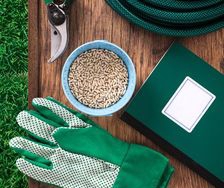
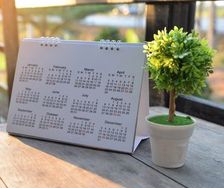
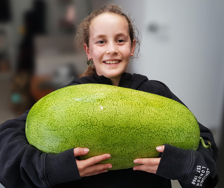

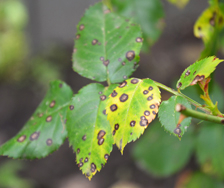
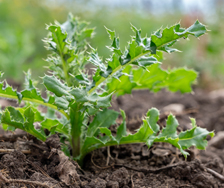

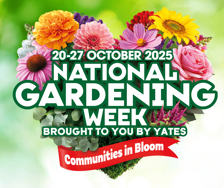
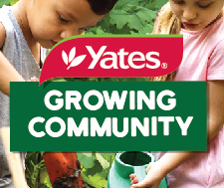








Share
Share this article on social media